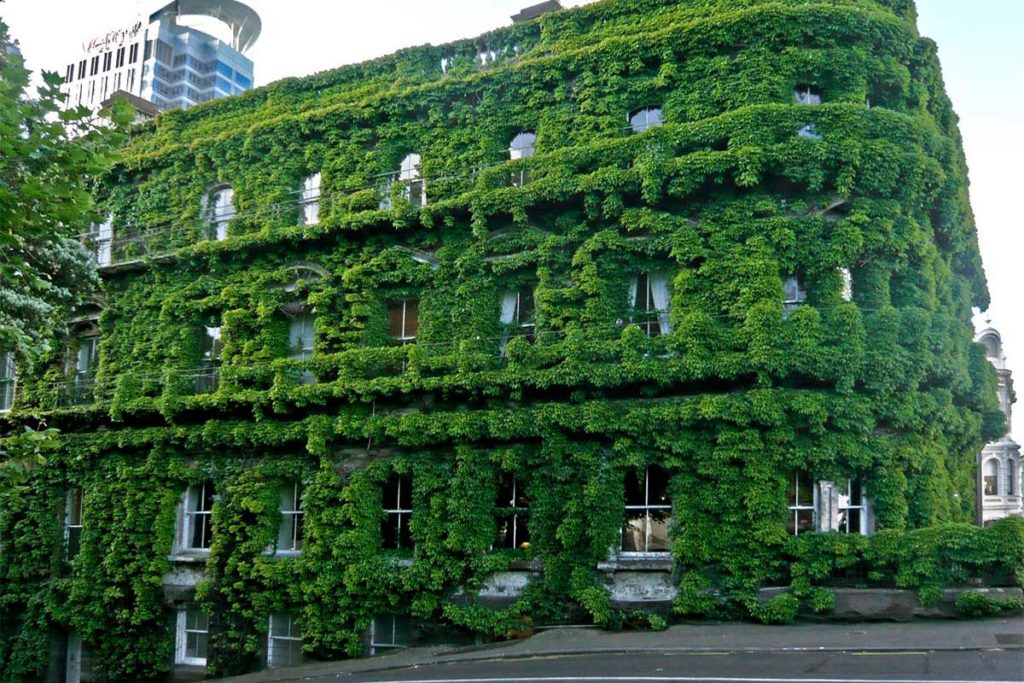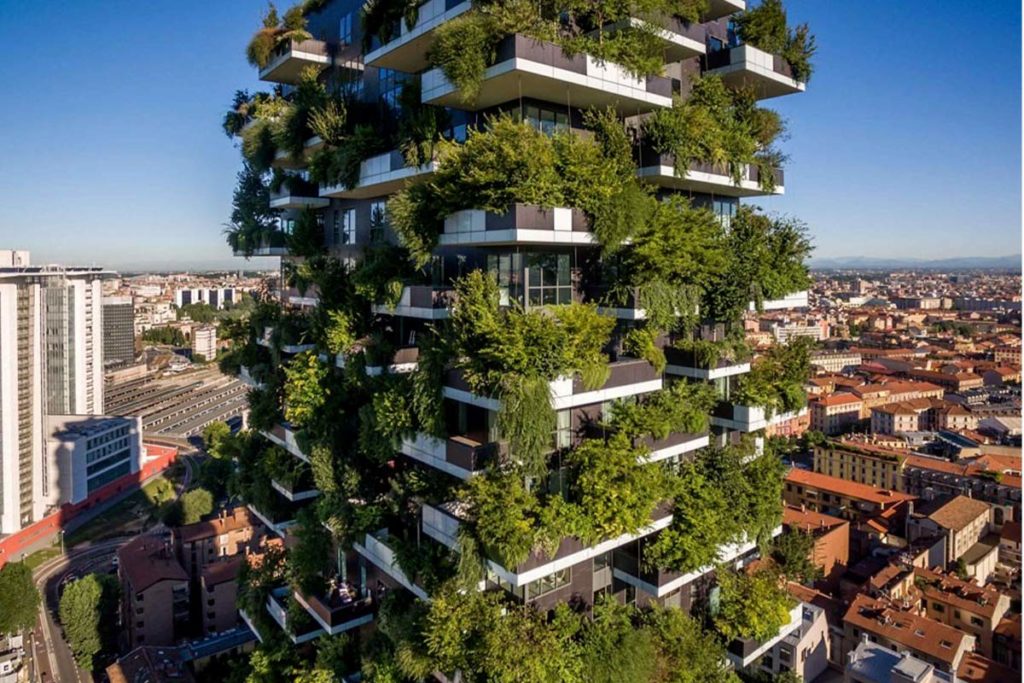Cities and dwellings are areas that pose a challenge to builders, architects and construction companies because of the current emergency and need for change. Solutions have emerged for the architecture of the future, or “green building”, to help people tackle global warming and pollution by incorporating nature into the city. But are they really useful, and effective?

Green architecture aims to bring people closer to nature, or rather to bring nature back into cities. While to begin with, projects may have had aesthetic and wellbeing considerations, these days there have to be additional environmental objectives to create a new kind of building in the long term. The term ‘green architecture’, which refers to what is truly a societal trend, covers projects such as the greening of existing buildings, the optimisation of facilities in a sustainable manner and architectural projects that include sustainability. It also encompasses the use of environmentally-friendly materials and environmentally-responsible techniques. While green architecture advocates plans for the city of tomorrow with new builds, it is also about changing today’s cities profoundly by adding greenery by way of plants and trees wherever possible.
Green building: eco-friendly materials
Green architecture rethinks construction projects in their entirety. The construction sector is one of the most polluting, right from the design stage. The construction of multi-storey buildings requires a vast amount of resources, from water to energy to raw materials. It accounts for some 20% of France’s greenhouse gas emissions. So it makes sense for new “green” architects to embrace new strategies with environmental objectives right from the construction stage. Thus, green building focuses on lighting, heating and air conditioning systems to make them more resilient and less energy-intensive. It also looks at insulation systems, and techniques to save water throughout a multi-storey building. It’s a strategy aimed at optimising energy efficiency and reducing environmental impact. As with all innovations driven by the desire for sustainability, the idea of the life cycle is central to the thinking behind it. Green architecture also takes a long-term view, with building maintenance and even demolition aimed at keeping environmental damage to a minimum.
Green architecture: a closer look at greening
Green architecture brings nature into the city, starting from existing buildings. And in this area, architects’ creativity knows no bounds. We often hear about “vertical forests”, the greening of a multi-storey building from top to bottom to cover it with carefully-positioned trees, as Italian architect Stefano Boeri is doing in Milan. These are carefully-chosen varieties planted on balconies set aside for the purpose, with enriched soil delivered complete with thousands of ladybirds to deal with aphids. Plant walls are more widespread. Affixed to facades by means of specific, moisture-holding fences or installations, they dot facades with plants to green them over. Then there is wooden cladding on the outside of buildings to improve heat insulation. In Paris, you can see greened-over rooftops with urban kitchen gardens on the tops of multi-storey buildings. In Chicago, the City Hall has had a greened-over roof since 2001. Also noteworthy is the siting of “urban farms” or shared gardens and allotments in the middle of built-up areas, such as the Bercy Beaucoup project, the Ferme du Rail in the 19th district and Jardin21 beside the Canal de l’Ourcq in Paris. Right in the middle of multi-storey buildings or on their roofs, people are finding permaculture sites to support biodiversity in the city, where composting, gardening and mini harvests set the pace of life for these little corners of greenery. The greened-over roofs are contrasted with hanging gardens, which prove to be calming places to chat and explore new things, with real benefits for the environment and climate.
The many advantages and benefits of green architecture

The greening of big cities demonstrates a desire to meet the need for connection with nature, and also to improve living conditions by combating the effects of global warming. Thanks to the photosynthesis mechanism of plants, they absorb more CO2 than they give off, and provide moisture through their “perspiration”. They create pockets of coolness that are precious during heatwaves, as well as maintaining a little biodiversity in the city by being a habitat for insects and birds. Greened-over spaces also improve comfort levels for the inhabitants, who benefit from being close to plants whose positive effects on human health and wellbeing are clear.
Moreover, besides the benefits for people and the environment, green architecture has another advantage. Green installations increase the real estate value of multi-storey buildings, and new builds with certifications such as LEED or Energy-Star are more attractive. Flats within them get rented out at a higher price, which is offset for families by savings in energy costs. Green architecture has all the makings of a virtuous circle. Except that it is not enough to stick a few plants on an old building to make it environmentally acceptable and transform the lives of its occupants… We should keep an equally close eye on municipalities that appear to support greening whilst sometimes continuing to lead concreting projects, or tree-felling ones, like the project involving the Eiffel Tower. This project in Paris is depriving the environment of the benefit of these century-old trees to make way for luggage lockers for tourists at the foot of the famous monument…
Green architecture has a bright future ahead of it, with endless possibilities for (re)incorporating nature into our living spaces and living without impacting negatively on it. To get there, greening has to be combined with all the latest technologies to save resources by using renewable energies (wind, solar and geothermal) rather than fossil fuels. These are practices that could prove essential to support city life in the future.







